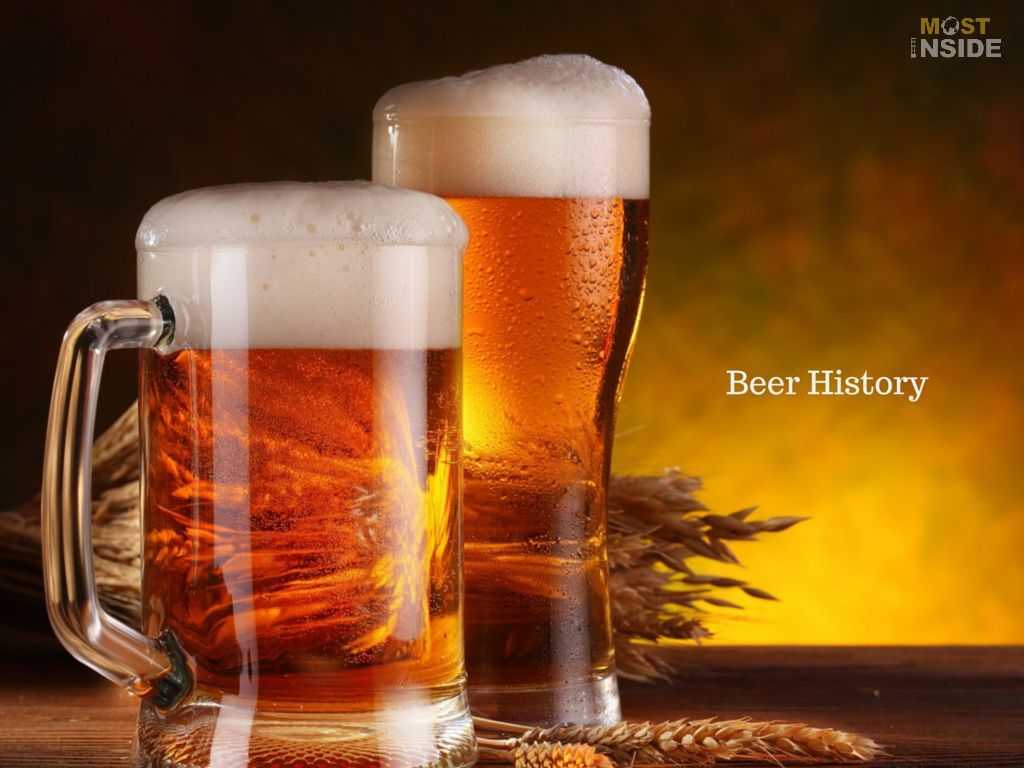Beer History That You Would Like To Know Before Drinking
This post was last updated on December 17th, 2024
Ancient History
Beer is one of the world’s oldest manufactured beverages, since early Neolithic or 9500 BC when cereal was first cultivated, and is recorded in the written history of ancient Iraq and ancient Egypt.
The most early chemical evidence of barley beer came to circa in 3500–3100 BC from the site of Godin Tepe in the Zagros Mountains of western Iran. According to the earliest Sumerian writings about the references to beer; mentioned about a prayer to the goddess Ninkasi, known as “The Hymn to Ninkasi”, which served as both a prayer and as a method of remembering the process of beer brewing in a culture with few literate people. The Ebla tablets which were discovered in 1974 in Ebla, Syria showed that beer was produced in the city in 2500 BC. Beer as a fermented beverage using rice and fruit was made in China around 7000 BC. Unlike sake the mold was not used to saccharify the rice which is amylolytic fermentation, the rice was prepared for fermentation by mastication or malting.
Beer was basically spread through Europe by Germanic and Celtic tribes a very long back in 3000 BC, and it was originally brewed on a domestic scale. The product consumed by the early Europeans might not be recognised as beer by most of the people today. Parallel to the basic starch source, the early European beers used to contain fruits, honey, numerous types of plants, spices and other substances such as narcotic herbs. And what the product was never comprised of was hops, as that was a later addition which was first mentioned in Europe around 822 by a Carolingian Abbot and again in 1067 by Abbess Hildegard of Bingen.
Modern History
Beer is an alcoholic beverage that is manufactured by the saccharification of starch and fermentation of the remaining sugar. The enzymes of starch and saccharification are basically derived from malted cereal grains the most commonly malted barley and wheat. Today, almost all beer is being flavoured with hops, which added bitterness which act as a natural preservative, and other flavourings such as herbs or fruits get occasionally added. The brewing process leads to a natural carbonation effect however forced carbonation is also used. The preparation and manufacture of beer is called as brewing.
Beer is considered as the world’s most widely consumed and highly demanded alcoholic beverage which is the third-most popular drink around the globe, after water and tea. It is actually the oldest fermented beverage.
Today the brewing industry is a global business, which includes several dominant multinational companies and thousands of smaller producing companies starting from brewpubs to regional breweries.
Coming to its nutritional table, the strength of beer is usually around 4% to 6% alcohol by volume (abv) although it may vary from 0.5% (de-alcoholized) to 20%. Usually all kind of beer comprises calories ranging from 95-360 calories per 100 ml.
Recommended: Best Light Beer In India
Interesting Historical Beer Facts
- Beer is fat free and contains protein and carbohydrates.
- Beer is considered as family of starch based beverages product without distillation.
- Dionysus, the Greek God of wine was inspired by the lesser-known Lydian Phrygian God of Beer, Sabazius.
- Japanese sake is actually a type of beer not a wine.
- Beer was one of the few safe ways to stay hydrated due to poor sanitation long ago and still true in some places.
- Nearly all beer in Europe was brewed without using hops before 1000 BC.
- The first hopped beers appeared in Northern Germany around the year of 1000.
- Canned beer became very popular among the soldiers who returned home from World War II as they were familiar and comfortable with cans during war overseas.
- Barley which is rich in starch that convert into sugars and enzymes, breaks down the starch at low heat to get perfect grain for brewing.
- Hops used in primarily in beer are boiled vigorously to extract the taste of bitterness.
- Kilning is the source of almost all malt flavours in beer.
- Yeast is very much sensitive to temperature, hence a little variation in temperature of brewing process could create a complete different beer.
- Amber glass bottles provide best protection to beer from light which affects hop compounds creating a skunky taste in beer.
- The head sticking to the side of the pint glasses is referred as lacing and is a sign of a clean glass and a perfect brew.
- A well known accepted practice in Babylon 4,000 years ago that after one month of the wedding, the bride’s father would supply his son-in law with all the mead he could drink. Mead is basically a honey beer and as their calendar was lunar based, that period was called the “honey month”, which we call it today as the “honeymoon”.
- The first professional brewers were women.
- There are approximately 400 types of beer.
- Storing the bottled beer upright reduces the oxidation and contamination from the cap.
- Germany has the highest number of breweries in the world that is 1200.
- In 1814 due to a huge vat rupture, a beer wave of 388, 000 gallons flooded London.
- The world’s longest hangover lasted for 4 weeks, after when a Scotsman gulped 60 pints of beer.
- The strongest beer in the world has got 67.5% of alcohol content.
- Amsterdam pays the alcoholics with 5 cans of beer per day’s work to clean the streets.
- Beer in Russia was not considered as an alcoholic beverage untill year 2013.
- In Africa there are beers which are brewed from bananas.
- Beer was used to be the national currency in the land of Pharaohs of Egypt.
Don’t miss: Benefits and Drawbacks of Consuming Beer
Recommended For You
Advantages and Disadvantages of Having Sex with An Escort
Priyadarshini Muduli
A full time passionate writer with imperishable determination to bring healthy, smart and pragmatic changes individually and socially. Concentrate especially on lifestyle, life and personal improvement, relationships, mental health and behavior, viral issues and literature based subjects.





